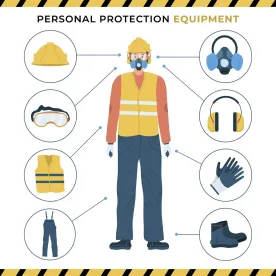The annual Smart Fabrics Summit was held again this year at the Wilson College of Textiles of North Carolina State University, sponsored by the Advanced Textiles Association (ATA, formerly the Industrial Fabrics Association International). John Lanza and Arian Jabbary, representing Foley’s Smart Manufacturing Industry Sector and its Fashion, Apparel & Beauty (fab) Industry Team, engaged with the nation’s preeminent stakeholders in the e-textiles industry, including the likes of electrical and textile engineers, research labs, manufacturers, consumer brands, and federal defense agencies to discuss the development of smart fabric technology and its implementation into everyday use applications.
The two-day event featured the format of “share and discuss,” where various members of the industry presented their latest findings in e-textile research and development, and then a Q&A discussion followed allowing for all members to confer and discuss their insights and solutions. This year’s Summit posed two questions to the attendees: How can market segments collaborate to accelerate the development of the industry by U.S. manufacturers? And, what policies will apply to, or should be developed for, smart fabric products?
Our answer: like any industry, a conformity of standards, messaging, and legal infrastructure is paramount. The segmented nature of the research and development activity in the smart fabrics industry, as well as the relative gaps between their current applications (e.g., defense, home furnishings, fashion, athletic wear, medical, etc.), means that stakeholders from all shades of the spectrum are currently operating in different, albeit related, siloes. These siloes are each subject to different rules and standards, while some are subject to none at all. Moreover, each silo messages the technology differently because of the difference in industry end users. A common framework and language for smart fabrics will help the smart fabrics industry achieve its full potential.
-
Conformity of Standards: During this year’s conference, one speaker remarked on the varying standards, tests, and units of measurement used to analyze the efficacy of filtering particulates in personal protective equipment (PPE). The speaker emphasized that there is a vast disparity in uniformity for the standards through which these smart fabrics are evaluated in this use-application. The multitude of standards in this area has rendered it difficult for smart fabrics to be used for PPE in a universally beneficial way. For example, Dartmouth researchers have developed a durable copper-based coating which can be integrated into fabric to create responsive and reusable materials such as protective equipment, environmental sensors, and smart filters. The coating responds to the presence of toxic gases in the air by converting them into less toxic substances that become trapped in the fabric. But without clear standards against which to measure the efficacy of the fabric, it will be difficult to know whether fabrics made using this technique can replace existing, higher-cost fabrics.
-
Conformity of Messaging: Any successful company knows good messaging is everything. You can have a fantastic product; however, if the advantages of that product are not communicated well to the target demographic, then it will not sell. It’s clear that if smart fabrics are to become ubiquitous, they first need to be commonly understood. It may be wise to establish standard terminology in the naming conventions of smart fabric products and technologies. Perhaps this can be posited by certain bodies such as ATA, itself. In doing so, consumers will recognize when a smart fabric is integrated into a product, but they will also identify the association of a given technology’s benefit with the way it is described. An example of this is conveying the difference to consumers between smart fabrics made with conductive inks, smart fabrics made by coating the fibers of the fabric, and smart fabrics made in which the fibers themselves are “smart.” A recent survey from IDTechEx reveals that this is a large problem for the smart fabrics industry, with the use of the various techniques split among respondents:

While the emphasis in the smart fabrics industry is still on technology development and implementation, regulatory oversight is clearly on the horizon. We provide a few examples that will likely impact the smart fabric industry in the coming years:
-
Data Privacy: Existing privacy regimes hinge on consent, but this framework for consent unravels when the technology processing and storing data is innocuous (hidden within fabric) and not tethered to a device or service. Indeed, a recent article from the International Fiber Journal noted that e-textiles may help to monitor a number of health conditions, as research has found that people who most need wearable health devices, such as smartwatches and fitness bands, may use them the least. Privacy laws will need to anticipate that, as the data-capturing elements become infinitesimally small, issues of consent and even awareness of tracking will become pertinent.
-
International Trade & Customs: Smart fabrics will be manufactured and traded across international borders. How will customs treat fabrics that contain e-textiles – like wearable devices, like standard apparel, or as a separate category? The laws that regulate import/export procedures, customs duties, intellectual property rights enforcement, and compliance with trade agreements, all of which are implicated by the trade of smart fabrics, will need to be examined and potentially updated.
-
Regulatory: Government agencies and industry bodies often establish standards and regulations for emerging technologies. In the case of smart fabrics, there may be regulations related to product safety, electromagnetic compatibility, radio frequency emissions, or specific industry standards for interoperability. Up first, however, may be regulation by the Food & Drug Administration (FDA). Owlet Baby Care’s “smart sock,” designed to be worn by infants and report live heart rate and oxygenation data, is not currently being sold in the U.S. after the FDA warned that it required classification as a medical device.
-
Employment and Labor Law: In the context of smart fabrics, employment and labor laws may be relevant when integrating technology into work environments. This can include issues related to employee monitoring, workplace surveillance, or the impact of automation on job roles.
Our takeaway from the 2023 Smart Fabrics Summit is that the future for smart fabrics is bright, but there’s definitely work to be done. It’s worth doing, though. IDTechEx predicts that the smart fabrics market will exceed US$780 million by 2033. Let’s roll up our sleeves and get to the task at hand.




 />i
/>i

